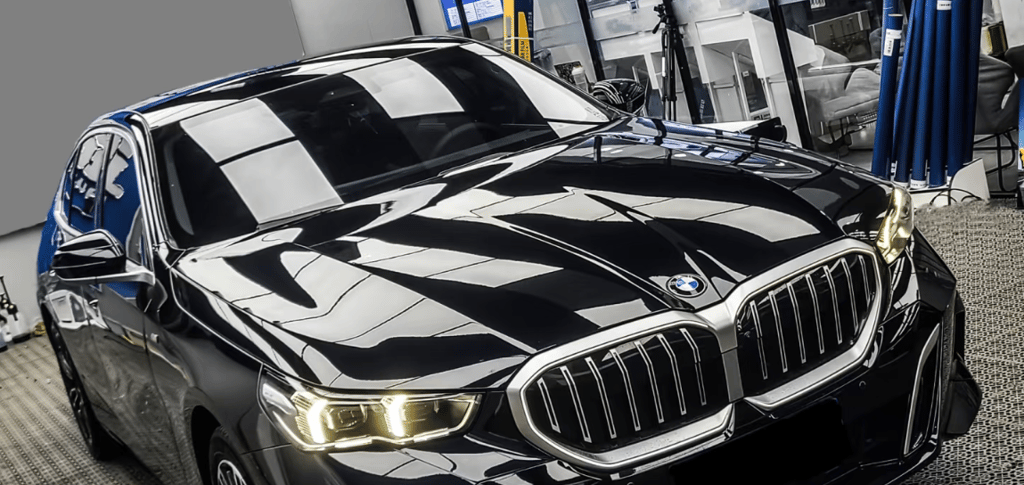PPF Myths Explained: The Truth About Thickness, Transparency, Gloss, and More
Blog post description.
11/4/20253 min read


When choosing a Paint Protection Film (PPF), many customers and distributors often ask similar questions:
Is thicker film always better? Does higher gloss mean better quality? Do I really need self-healing PPF?
These are common misconceptions in the market.
In reality, PPF performance depends on material composition, TPU quality, coating technology, and overall balance, not just one visible feature.
Let’s go through each of these questions to help you make the right choice.
Is Thicker PPF Always Better?
Not necessarily.
Thicker PPF can indeed provide better resistance against scratches and impacts from stones or debris.
However, the true protection performance mainly depends on the quality and thickness of the TPU base layer, not just total film thickness.
When the film becomes too thick, it loses flexibility and becomes harder to install—especially on curved car panels.
Recommendation: Choose a film with a balanced thickness that offers both strong protection and smooth application, rather than blindly pursuing extra thickness.
Is More Transparent PPF Better?
Yes.
Optical-grade transparency is one of the most important indicators of high-quality PPF.
A good PPF should maintain the original paint color and gloss without becoming cloudy or discolored.
Additionally, excellent UV resistance and color stability ensure the film remains clear and non-yellowing even after long-term exposure to sunlight.
This is particularly crucial for white and light-colored vehicles, where any discoloration becomes more noticeable.
Does Higher Gloss Mean Better Quality?
Usually, yes.
The smoother the film surface, the more evenly it reflects light—resulting in higher gloss and visual brightness.
A glossy finish enhances the car’s appearance and also helps reduce dust and water adhesion, making cleaning easier.
Gloss quality mainly depends on the flatness of the top coating and the clarity of the TPU base film.
If you want a mirror-like finish, choose PPF with a high-transparency TPU base and a perfectly smooth coating layer.
(Note: Some customers prefer matte or satin finishes for a personalized style—these films are designed intentionally for visual effect, not because of lower quality.)
Is Softer PPF Better?
No.
An ideal PPF must balance flexibility, protection, durability, and ease of installation.
If the film is too soft, it may fail to protect the paint from strong stone chips or road debris.
If it’s too hard, it can be difficult to apply, may not conform to curves properly, and can have poor weather resistance or weak self-healing ability.
The best PPFs feature moderate elasticity and resilience, providing both protection and easy installation.
Such balance is typically achieved through high-grade aliphatic TPU materials combined with advanced multi-layer coating systems.
Does PPF Need to Have a Self-Healing Function?
Yes, definitely recommended.
Self-healing PPF is one of the most desirable features in modern car protection films.
When the film is lightly scratched, heat from sunlight or warm water allows the surface to automatically recover to a smooth finish.
This property depends on both the elastic recovery of the top coating and the TPU base film’s self-healing capability.
Because the TPU layer is much thicker (often 10× thicker than the coating), its performance plays a decisive role.
Self-healing PPF significantly reduces maintenance costs and keeps the car looking new, making it a top choice for premium car owners and professional installers alike.
Does PPF Need to Be Weather-Resistant?
Absolutely.
Weather resistance determines how well a PPF maintains its appearance and protection over time.
A high-quality PPF should perform well under UV exposure, temperature fluctuations, and environmental stress.
Key features include:
Strong UV resistance (prevents yellowing and aging)
Excellent heat and oxidation resistance
Effective hydrophobic and anti-stain coating for easy cleaning
To verify durability, reputable manufacturers conduct accelerated QUV aging tests for over 2,000 hours.
The longer the test, the more reliable the film’s long-term performance in real-world conditions.
Conclusion: The Key Is Balance, Not Extremes
A great Paint Protection Film is not defined by a single feature like “thickness” or “softness.”
It’s the result of balanced engineering—combining advanced materials, optimized structure, and precise coating technology.
For B2B distributors and installers, consider the following principles:
Balanced thickness → Easy installation + strong protection
High transparency → Maintains original paint color
Effective self-healing → Reduces customer complaints and maintenance
Excellent weather resistance → Longer lifespan and higher brand reputation
Partnering with a true PPF manufacturer—one that has in-house coating lines, advanced testing labs, and R&D capabilities—ensures consistent quality and long-term business growth.
